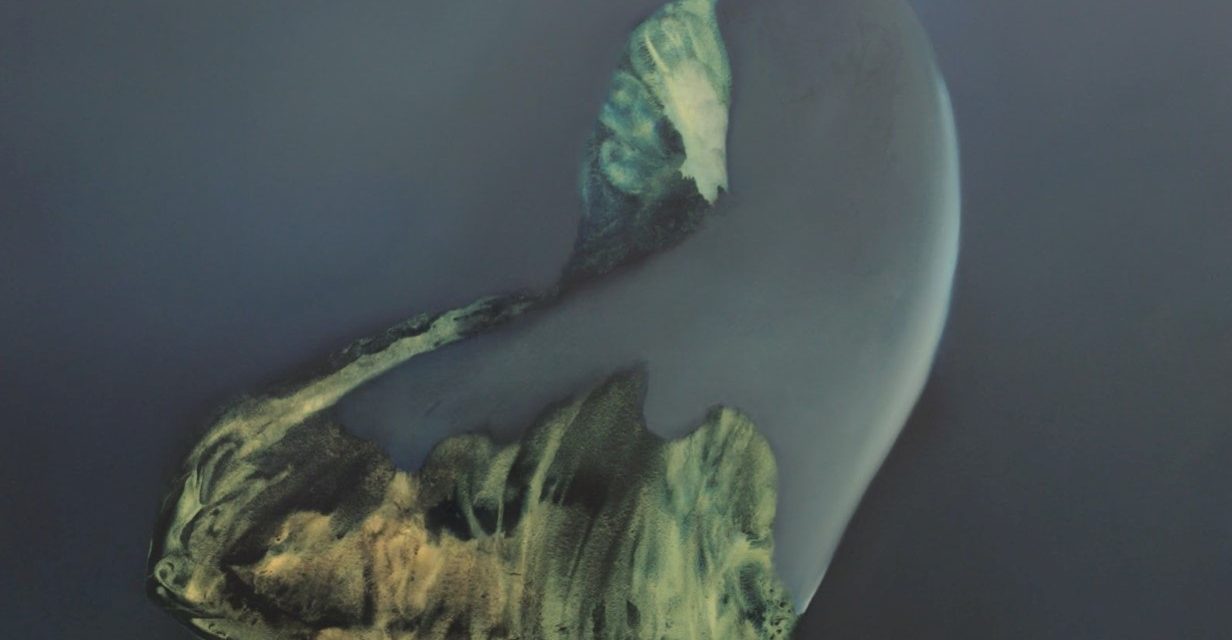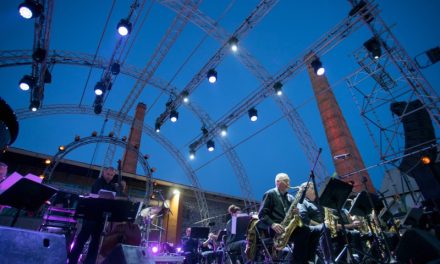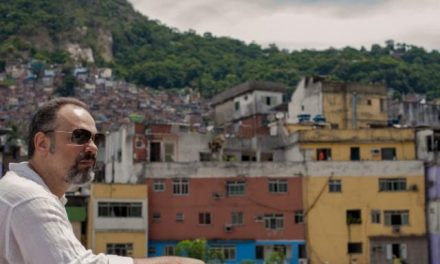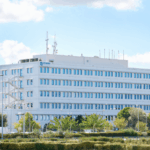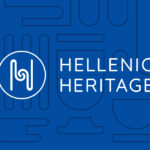The non-profit organization Greece in USA – a New York City-based organization that aims to promote contemporary Greek Culture in the United States – recently launched the second iteration of its program for the internationalization of Greek Culture in the USA with the group exhibition “The Right to Breathe”. Running through October 8, 2021, the exhibition – which is under the auspices of the Greek Ministry of Culture – takes as a starting point the “shortness of breath” derived from the experience of social injustice, political pressure and economic austerity, exploring its connection with poetics, live art, and embodied politics.
The exhibition – which takes place virtually at Undercurrent with the participation of 100 Greek artists – is in dialogue with “The Right to Silence?” show, presented at Anya and Andrew Shiva Gallery, John Jay School of Criminal Justice (CUNY). Thus, the topic of breathability that the exhibition identifies and aims to historicize also provides an insight into the ongoing revaluation of criminal justice reform.
Sarra Katerina “Untitled”, 2017, Oil on canvas, 165cm x 215cm (The Right to Breathe exhibition)
The exhibition is curated by Dr Sozita Goudouna, founder of “Greece in USA”, in collaboration with GIRES-Global Institute for Research, Education & Scholarship and Out of the Box Intermedia arts organization. More specifically, “Greece in USA” organization aims to convey a comprehensive and distinctive representation of Greece by producing cultural and educational programs that encourage intercultural dialogue. When it comes to shaping the image of contemporary Greece in the US beyond existing stereotypes, Goudouna’s view is that “Greek artists can stand as equals alongside their American colleagues” and that “as institutions in Greece are enhanced and the Ministry adopts a systemic approach to contemporary art, the more openness and cultural diplomacy will be strengthened and reinforced”.
“Our goal is to create the “third way” for cultural diplomacy between the state and major institutions that will always be in good cooperation with the institutions, ministries of culture and foreign affairs” stated Goudouna in a recent interview.
Dr Sozita Goudouna* spoke to Greek News Agenda** about the “Greece in USA” initiative, the organization’s plans and goals for the near future, the legacy of Greek Diaspora artists, as well as the importance of building cultural partnerships and a long-term strategy for contemporary art.
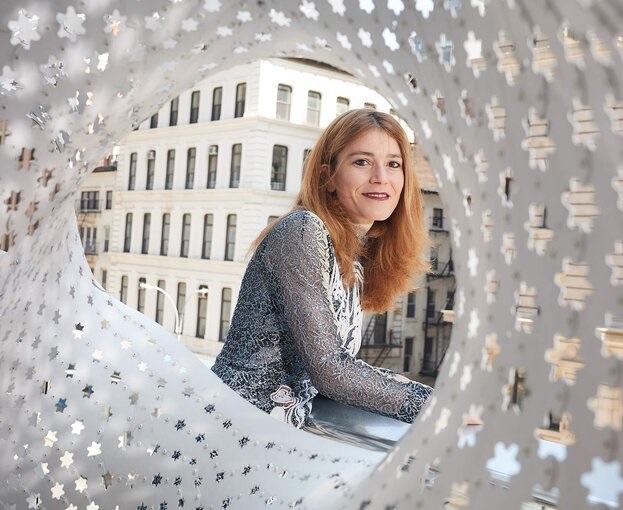 What has been the feedback – how have your colleagues and the public in the US received the two first exhibitions organized by the “Greece in USA” organization?
What has been the feedback – how have your colleagues and the public in the US received the two first exhibitions organized by the “Greece in USA” organization?
“GREECE IN USA” was founded in March 2020 in New York, during the pandemic. The sleepless city had been transformed into a ghost town like all metropolitan centers. The only similar experience for New Yorkers was September 11th. In this “atmosphere of fear” and following my experience in promoting Greek artists in London and New York, I was inspired by the founding principles of Performa Biennale. Performa is the organization to which I owe my settlement in New York in 2015, which was founded in part against the fear caused by the terrorist acts of 2001. For a month, Performa changes the way New Yorkers experience the city and especially the downtown, after 9/11, which as a traumatic event transformed the relationship of residents with public space. The Biennale aims to “reclaim” public space and locations that have changed use due to the dominance of Real Estate. Performa takes place in different parts of the city, from Times Square and New York Customs to museums such as MoMA, Whitney, Guggenheim, BAM (Brooklyn Academy of Music and Dance), galleries, and other cultural venues.
In this context and dynamic landscape, I envisioned GREECE IN USA as an organization that does not align with the contemporary phobias of social distancing and complacency, but that “reclaims” the importance of art in everyday life in public space and that primarily gives a voice to a specific nationality that previously had no substantial or influential presence in American cultural events. The main challenges, apart from the pandemic that completely shifts the way we perceive art, concern the shift of the reception of contemporary Greek art abroad in addition to overcoming the stereotypes about Greek nationality imposed mainly by the dominant culture. Our main intention isn’t to focus on “Greek topics” but to engage with international aesthetic and social issues. Thus, the inaugural exhibition dealt with issues of confinement and the American justice system, and the second exhibition focused on notions around the “I Can’t Breathe,” movement and the history of Seneca Village. I consider that despite the challenges in dealing with these sensitive topics the audience welcomed the initiative.
For my colleagues, curators and scholars I think the reception of the initiative was also positive because they felt that it is significant that Greek artists are invited to respond issues that they haven’t really reflected upon due to the geographical and political contexts that they haven’t experienced. African American artists would consider these issues in an entirely different manner and this is I think the contribution of these exhibitions, to introduce complexities and asymmetric knowledge or to provide versions of “uncomfortable knowledge” (Steve Rayner) on how artists from the “periphery” can make sense of the complexity of the social sphere in a global context and without aesthetisizing political tensions. The initiative is also focusing on building cultural partnerships, like with Undercurrent.nyc that had invited me as one the consultants for their EUNIC– European Union National Institutes for Culture project entitled UN/MUTE that brings together American with European artists and this is the reason I considered that the EU-USA cultural exchange could be relevant for the second iteration of the project and for contemporary Greek Artists.
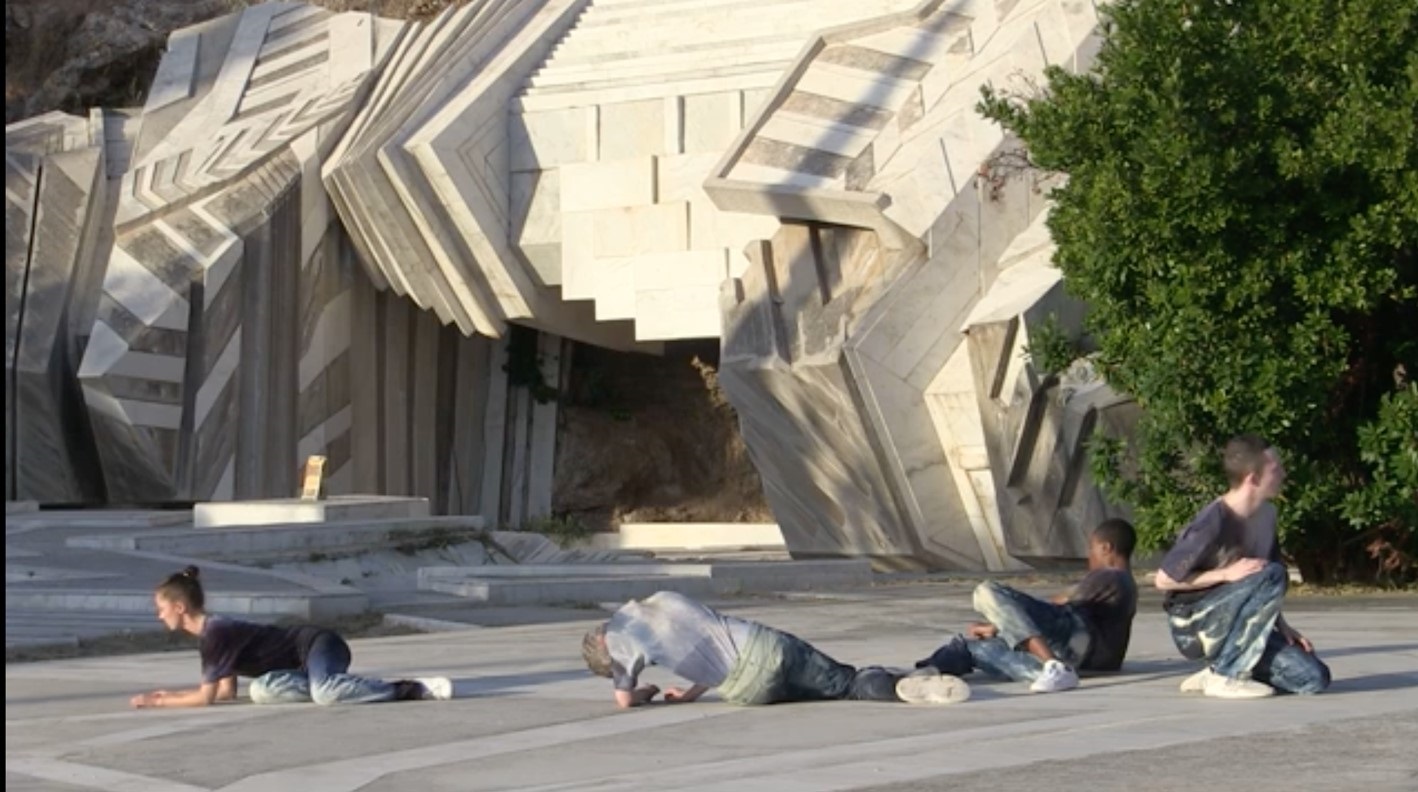
Performance of Figures by Maria Hassabi, (2019), with Oisín Monaghan, Alice Hayward, Mickey Mahar, Omagbitse Omagbemi Sound: Stavros Gasparatos. Outfits: Victoria Bartlett. At Aixoni Sculpted Theater in Greece designed by Nella Golanda curated by Sozita Goudouna powered by Onassis Foundation.
How easy is it for Greek contemporary artists to stand out on the international art scene, especially in competitive environments like the ones in the UK and the US in which you have personally lived and worked?
The Greek art scene has only evolved into a more international scene very recently owing to the broader interest of non-Greeks in Athens. That is partly a result of the financial and social crisis, and of art initiatives by younger, local, and international artists and curators who understand the importance of experimentation. You are probably aware of the expression “Athens is the new Berlin” and the lack of visibility of local art scenes especially of the so called “global south.” I am reluctant of terms like “global south,” but at the same time, I understand the necessity of using these terms. I am also very interested in the heterogeneous and even imaginary provinces of the world as they can be formulated in artistic and curatorial research. The expression “Athens is the new Berlin” in spite of its predictability, shows a promise and is justified despite the lack of a systemic and long-term cultural governmental policy for contemporary art, or perhaps owing to this lack. Working closely with Raymond Pettibon and David Zwirner, Regen Projects, Sadie Coles (the galleries that represent the artist), I am also trying to support Greek artists through the networks that I have access to, but also through other networks than the art market. Given that few Greek galleries manage to have access to the international art fairs, due to the logistics and lack of accessibility for emerging or regional galleries. Adding to this, I consider it is vital for these artists to receive more support whether from European or local networks to promote their work abroad. “Greece in USA” with its modest means, but with strong cultural capital, is trying to contribute to these efforts. It is principally the support of the artists that is helping us realize this goal even more than the systemic partners. The organization also aims to raise questions about stereotypes and different expressions or perceptions of the Greek “nationality.”
Greece has the unique advantage of people’s pre-existing emotional connection to its ancient world, but how are things for contemporary Greek culture? In your view, what is the way forward for Greece’s cultural diplomacy?
Greek contemporary art is more resistant to mass culture, either due to lack of resources or different concerns. The cultural perspectives of Greek contemporary art differ markedly from those of the international community, and this “Greek uniqueness” that isn’t limited to the ancient world and has not yet been mapped internationally sparked the idea and contributed to the decision to create the “GREECE IN USA.” The Creative Economy is constantly evolving around the world, with the United Kingdom and the United States clearly outperforming the sector. In the US, in 2017, the arts and culture contributed $ 877.8 billion, or 4.5%, to the country’s gross domestic product (GDP). In the same year, more than 5 million wage – and – wage workers were employed in the arts and culture, earning a total of $ 405 billion.
The creative economy is one of the sectors most at risk from the COVID-19 crisis, so a substantial and sustained national strategy for the recovery of the creative economy is required. I hope that the Greek government focuses on the importance of promoting art guided by both local and international partnerships that not only focus on the ancient world but also on the contemporary. Our cultural diplomacy should initiate from partnerships between municipal governments, arts and cultural organizations, community groups, and private sector charities. Major cultural organizations such as the Armory Art Fair and Museums such as the MoMA, Whitney, The Frick Collection, and the Performa Biennial are already planning their actions and strategy for promoting art in the post-COVID era. In this context, GREECE IN USA investigates topics that reflect contemporary concerns and attempts to map the way in which Greek artists approach the social and cultural changes that take place. For many of us, contemporary art is a kind of refuge from the superficial tendencies of the dominant culture – a place where alternative values, politics, and different identities could claim to some extent cultural autonomy. I consider that in view of the lack of infrastructure in our country, our cultural diplomacy should focus on this “alternative” cultural capital.
 John Akomfrah “The Airport” Central Stage, Municipal Theater Pireaus, September, 2021.
John Akomfrah “The Airport” Central Stage, Municipal Theater Pireaus, September, 2021.
To this end, how influential has the presence of the Greek community abroad been, especially when taking into consideration the work of worldwide renowned artists of Greek origin, such as Stephen Antonakos and Chryssa?
The Greek Diaspora has a strong legacy of artists such as Loukas Samaras, Jannis Kounelis, Chryssa, Gregory Markopoulos, Theodoros Stamos, Stephen Antonakos and among the younger ones Eleni Mylona, Zoe Keramea, Mark Hadjipateras among others. The essential problem lies in the inability of cultural institutions in Greece to export the domestic cultural production mainly of the performing and visual arts. The reasons are multi-faceted, but I would first identify the problem in the lack of a systematic cultural strategy, but this is a generalization that has been shared by many. I would also add that to some extent in the past we did not realize the value of cultural exchanges. Hence, the presence of few selected Greek artists abroad was influential however it was a result of the artists’ personal endeavors without state support.
Could you give us an insight into your platform’s plans and goals for the near future?
“Greece in USA” aims to activate the dynamics of contemporary Greek art with interventions in cultural spaces and in the public space of New York. In November, it will collaborate with Nektarios S. Antoniou, member of our board of directors, to present Arvo Pärt’s world premiere at the Metropolitan Museum of Art. As a curator of Performa, I realized that Greek and Cypriot artists, like Maria Hassabi, were able to have a strong cultural exchange with American and international colleagues. I have the impression that fellow curators would like to learn more about the contemporary Greek scene and that is why the role of an organization like Greece in USA can be a catalyst for promoting the work of contemporary Greek visual and performing artists abroad through osmosis with international artists and curators.
** Interview by Eleftheria Spiliotakopoulou
* Dr Sozita Goudouna is a professor, curator, and the author of “Beckett’s Breath: Anti-theatricality and the Visual Arts” published by Edinburgh Critical Studies in Modernism released in the US by Oxford University Press. She is an Adjunct Professor at CUNY City University of New York and in 2019 she joined Raymond Pettibon Foundation as Head of Operations to curate “Whoever Shows” at New Museum NY, Performa Biennial.
More info: visit “Greece in USA” website
See also on GNA: Arts in Greece | Stephen Antonakos: The Greek-American Sculptor of Neon; Former Tobacco Factory Transformed into Athens’ New Cultural Hub; Arts in Greece | Elpida Rikou on the Learning from documenta project; Arts in Greece | Athens: Europe’s New Mecca for Street Art ; Arts in Greece | Katerina Koskina on the need for cultural dialogue & EMST’s role as an arts capsule for the city branding of Athens
TAGS: ARTS | CIVIL SOCIETY | FESTIVALS | GLOBAL GREEKS | INTERNATIONAL EXHIBITIONS

